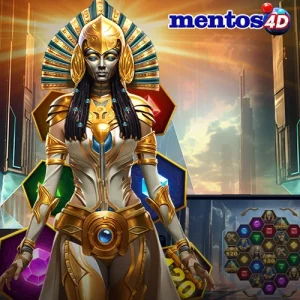Introduction: In the realm of entertainment, few mediums have undergone as profound a transformation as gaming. From humble beginnings in the arcades and living rooms of the 1970s to the immersive virtual worlds of today, the evolution of games has been a fascinating journey. This article explores the milestones, trends, and innovations that have shaped the gaming landscape into what it is today.
The Birth of an Industry: The story of modern gaming begins with the arcade era of the 1970s. Pong, released in 1972, is often credited as the game that kickstarted the industry. Its simple yet addictive gameplay laid the foundation for what was to come. Throughout the 1980s, iconic titles like Pac-Man, Space Invaders, and Donkey Kong captivated audiences worldwide, establishing gaming as a cultural phenomenon.
The Rise of Home Consoles: As technology advanced, home mentos4d slot consoles emerged as a popular platform for gaming. The release of the Atari 2600 in 1977 brought arcade-quality gaming into people’s living rooms, paving the way for future consoles like the Nintendo Entertainment System (NES) and the Sega Genesis. These systems introduced beloved franchises such as Super Mario Bros., The Legend of Zelda, and Sonic the Hedgehog, shaping the childhoods of millions around the globe.
The Transition to 3D: The 1990s marked a significant shift in gaming with the advent of 3D graphics. The release of the Sony PlayStation in 1994 revolutionized the industry, offering immersive experiences that were previously unimaginable. Games like Final Fantasy VII, Metal Gear Solid, and Tomb Raider set new standards for storytelling and gameplay, captivating players with their cinematic narratives and expansive worlds.
The Emergence of Online Gaming: With the widespread adoption of the internet, online gaming became a mainstream phenomenon in the late 1990s and early 2000s. Titles like Quake, Counter-Strike, and EverQuest popularized multiplayer gaming, allowing players to connect and compete with others across the globe. The rise of massively multiplayer online role-playing games (MMORPGs) like World of Warcraft further cemented the appeal of online gaming, fostering vibrant communities and virtual economies.
The Era of Mobile Gaming: The launch of the iPhone in 2007 marked a new chapter in gaming history. The App Store revolutionized the way people accessed and played games, making them more accessible than ever before. Casual titles like Angry Birds and Candy Crush Saga became global phenomena, appealing to a broader audience beyond traditional gamers. Mobile gaming continues to thrive, with smartphones and tablets offering a vast library of games for players to enjoy anytime, anywhere.
The Dawn of Virtual Reality: In recent years, virtual reality (VR) has emerged as the next frontier in gaming. With devices like the Oculus Rift, HTC Vive, and PlayStation VR, players can immerse themselves in lifelike virtual worlds like never before. VR experiences range from heart-pounding action games to serene explorations of fantastical landscapes, offering a level of immersion and interactivity that was once only dreamed of.
Conclusion: From the humble beginnings of Pong to the immersive worlds of virtual reality, gaming has come a long way in a relatively short time. What began as a simple pastime has evolved into a multi-billion dollar industry that encompasses a wide range of genres, platforms, and technologies. As we look to the future, one thing is certain: the evolution of gaming shows no signs of slowing down, promising even more innovation and excitement for players around the world.